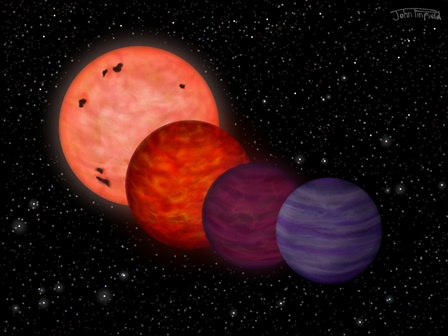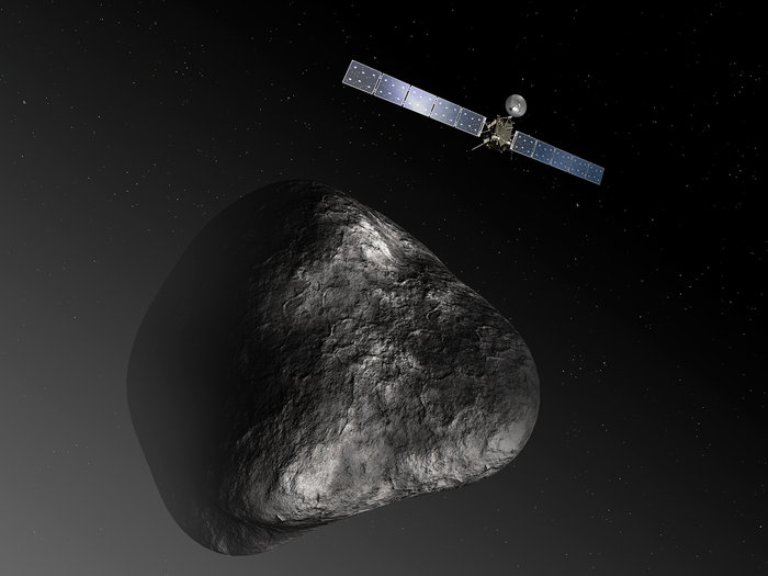
An artistic illustration depicting the four-stage sequence (left to right) of the possible extreme temperature evolution for WISE J0304-2705. Image credit: John Pinfield/RAS
LONDON (BNS): A team of international astronomers has spotted a celestial object in the constellation of Fornax in the southern hemisphere of the sky, which at present is cool enough like a planet, but could have spent much of its youth as a hot star.
The object, WISE J0304-2705, is a member of the recently established "Y dwarf" class - the coolest stellar temperature class yet defined.
Although its temperature is not far off than our own world, the object is not like the rocky Earth-like planets and instead is a giant ball of gas like Jupiter.
The current temperature of the object is 100-150 degrees Celsius, intermediate between that of the Earth and Venus. But it shows evidence of a possible ancient origin, implying that a large change in its temperature has taken place.
In the past, this object would have been as hot as a star for many million years, according to the researchers.
While astronomers have discovered 20 other Y dwarfs so far, the WISE J0304-2705 is defined as 'peculiar' among them due to the unusual features in its emitted light spectrum.
"Our measurements suggest that this Y dwarf may have a composition and/or age characteristic of one of the Galaxy's older members. This would mean its temperature evolution could have been rather extreme -- despite starting out at thousands of degrees, this exotic object is now barely hot enough to boil a cup of tea," said Prof. David Pinfield at the University of Hertfordshire, who identified the Y dwarf using NASA's Wide-field Infrared Survey Explorer (WISE) observatory.
The reason that WISE J0304-2705 underwent such extensive evolutionary cooling is because it is "sub-stellar" - its interior never became hot enough for hydrogen fusion -- the process that has kept the Sun hot for billions of years. And without an energy source maintaining a stable temperature, cooling and fading was inevitable.
According to the researchers, during the first 20 million years or so of its life, the celestial body would have had a temperature of at least 2800 °C, the same as Red Dwarf stars like Proxima Centauri (the nearest star to the Sun).
After 100 million years, it would have cooled to about 1500 °C, with silicate clouds condensing out in its atmosphere. At a billion years of age it would have cooled to about 1000 °C, cool enough for methane gas and water vapour to dominate its appearance.
And since then it has continued to cool to its current temperature of 100 to 150 °C.
WISE J0304-2705 is as massive as 20 to 30 Jupiters combined, so somewhere between the least massive stars and typical planets. But in terms of temperature it may have actually "taken the journey" from star-like to planet-like conditions, the study said.
The international team has published the results of their latest discovery in the journal Monthly Notices of the Royal Astronomical Society.
 Previous Article
Previous Article Next Article
Next Article













The Indian Air Force, in its flight trials evaluation report submitted before the Defence Ministry l..
view articleAn insight into the Medium Multi-Role Combat Aircraft competition...
view articleSky enthusiasts can now spot the International Space Station (ISS) commanded by Indian-American astr..
view article